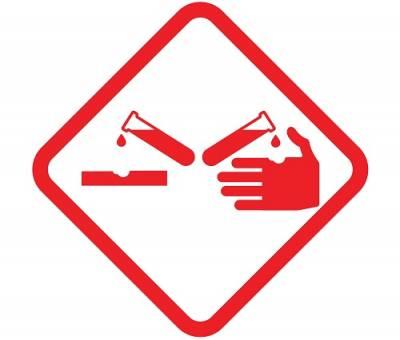The Anatomy of a Chemical Burn
 In workplaces across the country, employees utilize a wide variety of chemicals and other substances in the course of doing their jobs. While some chemicals are relatively safe, others present serious dangers, including the possibility of chemical burns. If you have suffered a chemical burn on the job, it is important to seek treatment right away and to know your rights regarding workers’ compensation.
In workplaces across the country, employees utilize a wide variety of chemicals and other substances in the course of doing their jobs. While some chemicals are relatively safe, others present serious dangers, including the possibility of chemical burns. If you have suffered a chemical burn on the job, it is important to seek treatment right away and to know your rights regarding workers’ compensation.
Hazardous Chemicals
A chemical that can cause serious burns is typically a strong acid or base. Some of these substances can be found in the average home, such as drain cleaners, chlorine bleach, and ammonia. In an industrial setting, however, there are countless types of chemicals that may be used for a wide variety of applications, including many highly concentrated acids and alkaline solutions.
When a hazardous chemical comes into contact with a person’s skin, the chemical may begin to eat away at the skin at the point of contact. The severity of the burn will depend on a number of factors including the type and concentration of the chemical and the length of the contact with the skin. A “superficial injury” is one that causes damage to the top layer of skin. A “partial thickness” or “dermal injury” is an injury to the second layer of skin, known as the dermis. The most severe type of such burns is known as a “full thickness injury,” and results in damage to the top layer of skin, the second layer of skin, and subcutaneous tissue.
Treating a Chemical Burn
Immediate first-aid should be applied in any situation involving a chemical burn. The first step is to remove the chemical that is causing the burn and any contaminated clothing or jewelry, including watches and rings. Then, rinse the burn site with a gentle stream of cool tap water for 10 minutes or longer. For burns over a large part of the body, a shower may be best. Pain and mild swelling may be treated with over-the-counter anti-inflammatory medications.
When such an injury occurs at work, it is a good idea to seek medical attention so that the full extent of the burn can be evaluated. It is also important to report the burn to a manager or supervisor.
Collecting Workers’ Compensation
Any medical attention you receive for a chemical burn suffered on the job should be covered by your employer’s workers’ compensation insurance policy. If your burn prevents you from returning to work quickly, you may also be entitled collect compensation for lost wages or temporary disability. In the most extreme cases, you may even be eligible for permanent disability if you will never fully recover.
Unfortunately, workers’ compensation claims can be complex and carriers are not always very cooperative. If you have been injured by a chemical at work, contact an experienced Aurora workers’ compensation attorney to discuss your available options today. Call 630-907-0909 for a free consultation at Kinnally Flaherty Krentz Loran Hodge & Masur, P.C. and get the compassionate representation you deserve.
Sources:
http://www.mayoclinic.org/first-aid/first-aid-chemical-burns/basics/art-20056667
http://www.emedicinehealth.com/chemical_burns/article_em.htm




